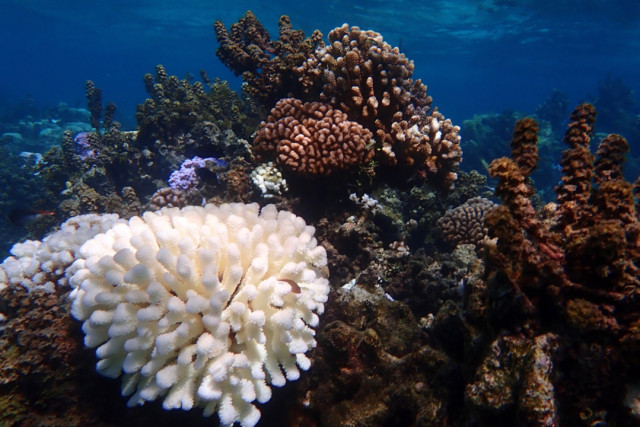Looking for Local Levers

Coral reefs are not doomed. Although human activities threaten the iconic ecosystems in many different ways, scientists maintain that reefs can continue to thrive with the right assistance.
A study by researchers at UC Santa Barbara details how reducing nutrient pollution can help prevent coral from bleaching during moderate heatwaves. The results, which appear in the journal Proceedings of the National Academy of Sciences, offer new strategies for managing these highly threatened yet important ecosystems.
Reef-building corals host beneficial algae within their tissues. In exchange for protection and nitrogen, the algae provide the coral with sugars. All is well until the water gets too warm.
At higher temperatures, the algae’s photosynthesis goes into overdrive, and the chemical balance between the coral and the algae breaks down. At a certain point, the coral ejects its tenant in a process known as bleaching. Coral can survive for a time without their algae, so recovery is possible if conditions return to normal quickly. But in the absence of its partner the coral will eventually die, and the worse the bleaching is, the more likely that is to happen.
Experiments in the lab, as well as a few small field studies, began to suggest to researchers that nitrogen pollution, such as from fertilizer and sewage runoff, could exacerbate bleaching. Excess nitrogen in the water can short-circuit the beneficial partnership between corals and the algae. However, until now, it was not known if nutrient effects on bleaching occurred in many corals over large areas.